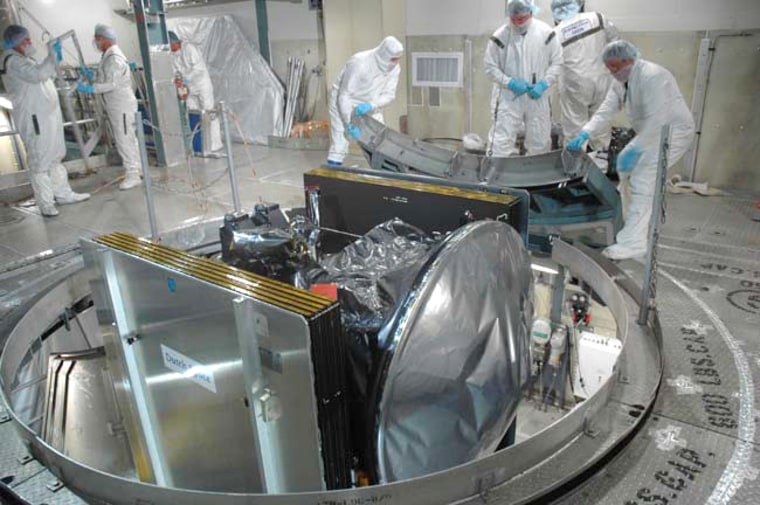A NASA probe bound for the two largest space rocks in the solar system is on track for a Thursday launch, though mission managers are keeping a close eye on the weather.
Anticipated weather conditions dipped slightly for the planned 7:20 a.m. EDT (1120 GMT) liftoff of NASA's Dawn mission to the asteroids Vesta and Ceres, with the possibility of rain showers at launch time marking the only concern.
"Hopefully, we'll get some good weather on launch day, but we are watching some shower activity," launch weather officer Kathy Winters said in a Tuesday mission briefing at NASA's Kennedy Space Center in Cape Canaveral, Fla.
The chance of rain preventing Dawn's 7:20 a.m. EDT (1120 GMT) launch from Pad 17B at Cape Canaveral Air Force Station in Florida increased 10 percent Tuesday, giving the planned space shot a 40 percent chance of delay, Winters said. Weather conditions are expected to improve for Friday should Dawn's launch be delayed one more day, she added.
Dawn's eight-year mission to the asteroid belt that girdles the sun between the orbits of Mars and Jupiter has weathered a host of delays, and even cancellation, to become NASA's first probe aimed to fly to, and orbit, two separate celestial bodies after leaving Earth.
"Dawn will be the first mission to journey into and explore the heart of the asteroid belt," said Jim Adams, NASA's deputy director of the Planetary Science Division at the agency's Washington, D.C., headquarters.
Propelled by a three-engine ion drive, the spacecraft is due to reach the asteroid Vesta in August 2011 and spend just under a year studying the 330-mile (530-kilometer) wide space rock before heading off to a February 2015 rendezvous with the larger Ceres. With its spherical shape and a diameter that spans 585 miles (942 kilometers), Ceres is large enough to be considered a dwarf planet.
Slideshow 12 photos
Month in Space: January 2014
Researchers hope that Dawn's $449 million mission to study the two very different asteroids will shed new light on the intricacies of planetary formation and early evolution of the solar system.
NASA tried to launch Dawn earlier this summer, but bad weather and issues related to its Delta 2 rocket and tracking assets intervened. There was, however, a silver lining to the months of launch delay for Dawn, mission managers said.
"The benefit is that we are going to arrive at Vesta two months early and gain two more months of science," Adams said, adding that the probe was originally due to reach its first asteroid in October 2011.
Mission managers added that they were confident Dawn would launch Thursday, and were eagerly awaiting the planned liftoff a bit after daybreak.
"If you live in the Bahamas, this is one time you can tell your neighbor, with a straight face, that Dawn will rise in the west," Dawn project manager Keyur Patel, of NASA's Jet Propulsion Laboratory in Pasadena, Calif., told reporters.

